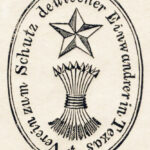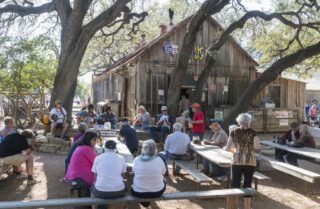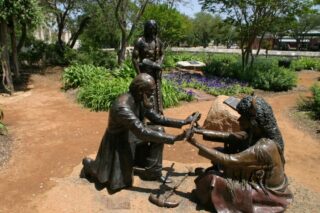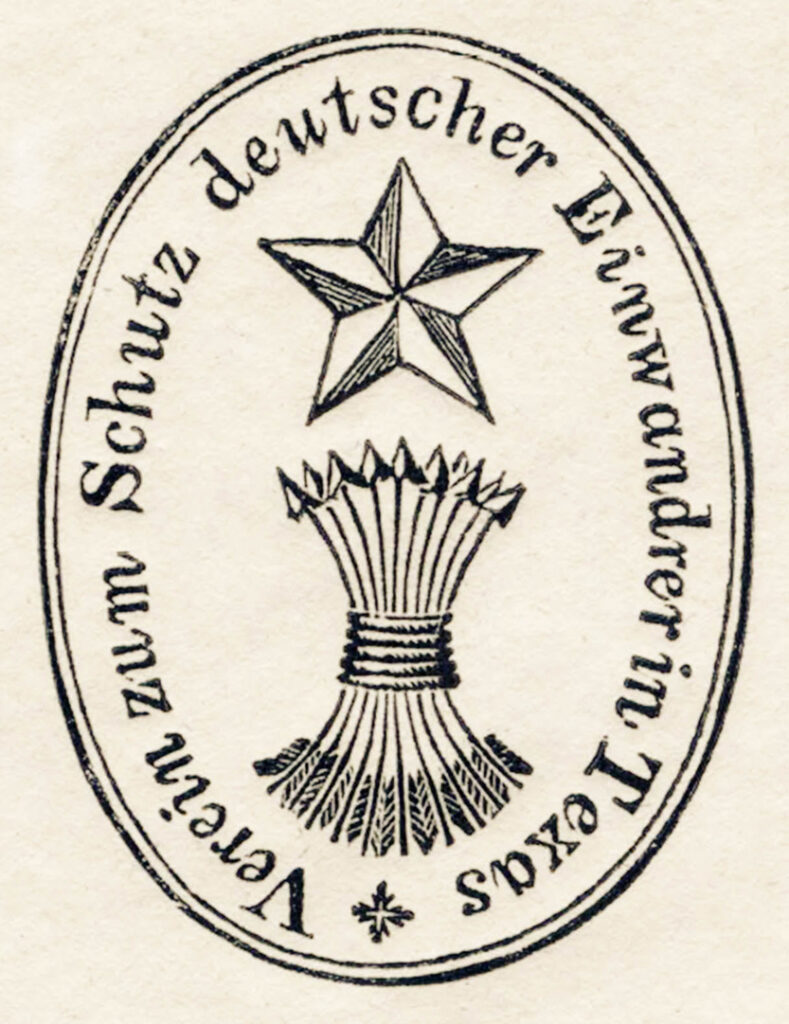Texas Germans’ Migration and Knowledge
A Miniseries on Nineteenth-Century Germans’ Migration to Texas and Knowledge Transfers
With contributions by Jana Weiss, Abigail Escobedo and Simon Herbert, Jacob Johnson and Taylor Mullins, Rodolfo Alvarez and Aubrey Hernandez, Aiden Maliskas and Mark McShane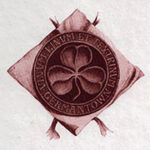
Editorial Note: The Migrant Knowledge Blog team published this introduction to the miniseries today to coincide with the start of the 48th Annual Symposium of the Society for German American Studies taking place in Austin, Texas, from April 4-6, 2024. For more information on the symposium or the SGAS, please visit the Society for German American Studies.
On to Texas, on to Texas,
Where the lone star in its glory
Prophesies a world of freedom,
Beckons to each heart resounding
To the call for truth and justice –
There alone my heart would be.1
August Heinrich Hoffmann von Fallersleben
In the 1840s, August Heinrich Hoffmann von Fallersleben, best known for writing “Das Lied der Deutschen,” whose third stanza is the national German anthem, composed a series of glowing poems on Texas, inspired by the travels of his poet friend and migration agent Gustav Dresel. Von Fallersleben never made it to Texas (even though he was promised 300 acres of land by the Adelsverein, a society of nobles founded in 1842 and officially known as The Society for the Protection of German Emigrants in Texas). Ironically, von Fallersleben, like many of his compatriots, created a European “Texas fever” but never actually set foot on Texas soil. Early German knowledge of Texas was often based on other people’s experiences and hearsay. 2
Probably the most infamous example of misinformation, inexperience, and ignorance to (local) knowledge was the Adelsverein’s association with the Fisher-Miller Land Grant in 1844, which provided three million acres between the Llano and Colorado Rivers. None of the nobles had ever seen the grant area. Unsurprisingly, they planned its settlement with inadequate finances to move thousands of migrants from the coast 200 miles inland and without notifying the local tribe, the Penateka Comanches, who used the area as their winter hunting grounds.3
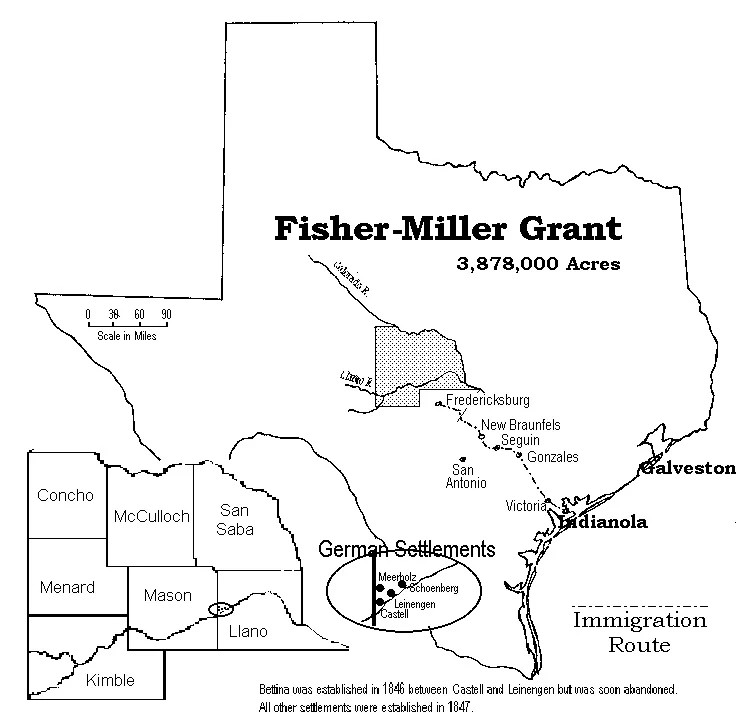
Nevertheless, the Adelsverein successfully established Texas as a major goal of subsequent emigration by bringing approximately 7,000 Germans to the Hill Country and establishing peaceful relations with the Penateka – though they did not manage to settle colonists in the Fisher-Miller area. The first and second commissioners of the Adelsverein, Prince Carl Solms-Braunfels and John O. Meusebach, established two important settlements, New Braunfels (1845) and Fredericksburg (1846); initially thought of as way stations, these became important towns.4
Except for the Hill Country and South Central Texas, Germans mostly avoided Southern states, which makes Texas an interesting case study for our miniseries. Among the first Europeans to arrive in the U.S., Germans typically settled along the East Coast and the so-called German Belt in the (Upper) Midwest. Texas became a major destination in the 1830s, initially inspired by Friedrich Ernst, who described the land as an earthly paradise with a winterless climate, abundant game, and all the freedoms one could wish for in a letter he sent back home in 1832. The letter was widely circulated, and Ernst became the “father” of Texas German (chain) migration, quickly getting the attention of the aforementioned Adelsverein.5

By 1850, about 11,000 Germans lived in Texas, constituting 5 percent of the Texas population. This percentage remained constant throughout the nineteenth century. Between 1865 and the 1890s, roughly 40,000 Germans arrived. By around 1900, about one-third of all Texans were of German ancestry. Overall, Texas Germans were quite diverse, as Terry G. Jordan aptly emphasizes. They included
peasant farmers and intellectuals; Protestants, Catholics, Jews, and atheists; Prussians, Saxons, Hessians, and Alsatians; abolitionists and slaveowners; farmers and townsfolk; … each valley offered a different kind of German. The Llano valley had stern, teetotaling German Methodists, who renounced dancing and fraternal organizations; the Pedernales valley had fun-loving, hardworking Lutherans and Catholics who enjoyed drinking and dancing; and the Guadalupe valley had atheist Germans descended from intellectual political refugees.6
This (internal) diversity in a frontier borderland state adds to the allure of studying Texas, and it caught the attention of my students.
Texas Germans’ Migration and Knowledge: Conceptualizing and Situating the Student Miniseries
This miniseries presents undergraduate student research papers written during a course on German-American migration I taught in Fall 2023 at the University of Texas at Austin. We followed a “high impact” approach, which seeks to make connections for students beyond the classroom, allowing them to apply their knowledge and skills in real-world (like) settings and acquire independent research skills. Writing a blogpost for a bigger audience than “just” their professor has increased student motivation and improved the quality of their work.
The students explored (translated) sources that have been rarely touched on;7 some of these have been published (and edited); others are housed at the Dolph Brisoce Center for American History in Austin, which we visited during our class. All papers follow an actor-centered approach and tackle the question of knowledge in the nineteenth and twentieth centuries: What knowledge of indigenous culture was available to the first commissioners of the Adelsverein prior to and after their migration, and how did this translate into successful diplomacy in their new homeland? How was knowledge circulated, more specifically, how did art shape German (American) knowledge on Indigenous culture? Moreover, how did German migrants adapt and adjust their culinary knowledge with regard to food availability and scarcity? Closely related, what knowledge did the creators of the Wurstfest in New Braunfels have in 1961 concerning (historical) Texas-German foodways, ethnicity, and the local economy? In engaging with these questions, the student papers add to the existing (albeit slowly growing) literature on Texas Germans. Arguably, were it not for the continuous efforts of a handful of scholars over the past decades, most notably and recently Walter Kamphoefner, James Kearney, Daniel J. Gelo, and Christopher Wickham, the literature would still be sparse to this day. 8
Historians, in particular, have not devoted as much time to studying Southwestern German-American migration as that of the East Coast or the Midwest. This is surprising, not only because Germans settled in Texas early on and long represented the largest group of European immigrants, but also because linguists have studied the Texas German dialect nearly as extensively as Pennsylvania Dutch.9 Nevertheless, had it not been for my recent position as DAAD Professor at the University of Texas at Austin and my wonderful colleagues working at the Texas German Dialect Projects (especially Hans Boas) as well as our Germanic Studies Department’s expert on Texas Germans, James Kearney, I might not have conceptualized this miniseries.10 Above all, had it not been for the work and dedication of my students, who became fascinated with the complex legacy and rich record of (non)fictional literature, newspapers, art, and architecture (to name a few) that Texas Germans left behind, this miniseries would not have come to fruition. Interestingly, while most of the students came from Texas and had dealt with Texas history extensively in their high schools, the majority had, for instance, never heard of the “unbroken” 1847 Meusebach-Comanche Treaty, “an anomaly in the history of nineteenth century Indian-white relations.” 11
As Texas Germans circulated their knowledge about the voyage, their old and new homeland, and how they adapted, they experienced times of political turmoil, such as Mexican rule over Texas (1821–1836), the Texas Revolution, and the establishment of the Republic of Texas (1836–1845), followed by Texas’s transformation into the 28th state of the United States (1845–1861), the Confederacy years (1861–1865), as well as the two World Wars. Texas has always been a borderland region, a “diffuse space[ ] of contestation, adaptation, and admixture” where “two or more spheres of hegemony … claim jurisdiction over resources and people limit each other and often overlap.”12 Here, Anglo-Americans, several Native American tribes, African Americans, Mexicans, and diverse Europeans, such as groups of Spanish, French, and German immigrants, (in)voluntarily met.
Texas was part and parcel of Western expansion, and Texas Germans took part in the wider colonization efforts and violent displacement of Native Americans. Around 1800, Texas had a large and diverse Native American population, some of whom had been pushed into this territory due to westward expansion. By 1900, most of this population was gone, either exterminated or expelled. Julia A. Brookins reminds us that Germans in Texas “advocated for U.S. territorial conquest in spite of its deleterious consequences for other minority groups – particularly native Tejanos, Mexican immigrants, and Indigenous Indians.”13
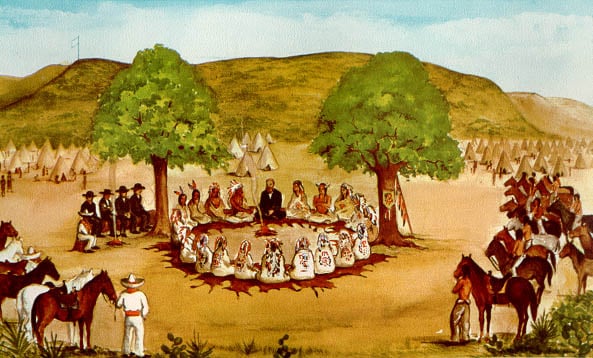
Yet, while Germans were part of nineteenth-century settler colonialism, they differed from the dominant Anglo-American society in their approach to the tribe(s). As mentioned above, the settlement area of the Fisher-Miller Land Grant was home to potentially hostile tribes, most notably the Penateka Comanches. As Matthew Babcock recently commented: “The fact that Germans sought permission from Comanche before settling on their land places them in sharp contrast to most Anglo Texas of the era.”14 By following a communal approach, German leaders and the chiefs of the Penatekas successfully negotiated a treaty of peaceful integration and trade. Two of the blogposts in the miniseries address knowledge related to these negotiations. The post by Abigail Escobedo and Simon Herbert traces how (early) German settlers such as John O. Meusebach acquired knowledge about the Indigenous lands and customs through expeditions and reading reports of those who had already gained experience. Jacob Johnson and Taylor Mullins’s post looks at drawings, such as those by Texas German artist Friedrich Richard Petri, that expanded contemporary (and our) knowledge of Comanche-German history. These student papers also indirectly engage with a lack of knowledge about Texas, such as early German author Alwin H. Soergel’s criticism of the poor state of knowledge about Texas, exemplified in Prince Solms-Braunfels’s misleading and biased account of the Adelsverein.15
Besides German-Indigenous relations, food is a key theme of two of the student papers. Rodolfo Alvarez and Aubrey Hernandez explore nineteenth-century Texas German foodways. It seems that German migrants, forced by the scarcity of wheat in the early settlement days to use corn bread, found the adjustment difficult. Nevertheless, Germans (and Czechs) brought highly sophisticated knowledge of preserving meats, linking ethnic foodways to today’s annual Wurstfest in New Braunfels. As Aiden Maliskas and Mark McShane point out in the final blogpost, the festival launched in 1961 and has become a tradition and a major tourist magnet.
I hope to continue the series with more student papers, which could, for example, explore the complex issue of (anti)-slavery among Texas Germans, especially among the Dreissiger and Achtundvierziger. For the latter, a transfer of knowledge and political beliefs between the migrant group and the receiving Southern society led to conflict before, during, and after the Civil War. Overall, this miniseries seeks to add nuance to the Texas German experience, to spark further research, and hopefully to inspire other educators to look for alternative forms of student performances beyond exams or term papers.

Jana Weiss is DAAD Associate Professor at the University of Texas at Austin and co-editor of History of Intellectual Culture: International Yearbook of Knowledge and Society. With a focus on transatlantic history, she is currently working on a book examining how German Americans triggered the lager beer revolution in the U.S.
Featured image: Logo of The Society for the Protection of German Emigrants in Texas, also known as the Adelsverein. Public domain.
- Cit. in Selma Marie Metzenthin Raunick, “A Survey of German Literature in Texas,” Southwestern Historical Quarterly 33, no. 2 (1929): 134–59, 135. Von Fallersleben wrote several poems, songs, and an opera on Texas (cf. Anders S. Saustrup, “Hoffmann Von Fallersleben, August Heinrich,” Handbook of Texas Online (published 1995/updated 2019). ↩︎
- The first German author who had actually been to Texas and published a book exclusively dealing with it was Detlev Dunt in 1833: Journey to Texas, ed. and transl. James C. Kearney and Geir Bentzen (Austin, 2017). Dunt advised Germans to migrate to Texas. ↩︎
- Other factors, such as the outbreak of the Mexican-American War in 1846 and a cholera epidemic, lay outside the Adelsverein’s control. On the early settlements, the empresario system, and its effect on Texas migration, cf. Rudolph L. Biesele, The History of the German Settlements in Texas, 1831–1861 (Austin, 1930); Terry G. Jordan, German Seed in Texas Soil: Immigrant Farmers in Nineteenth-Century Texas (Austin, 1966). ↩︎
- The terms of the grant were to survey and locate 1,000 families. The grant was issued in 1842, renewed in 1843, and the deadline was extended in 1844. However, no colonists settled in the area and the Adelsverein ended up violating the terms of the contract with the Republic of Texas. Regardless, the Texas legislature soon thereafter issued certificates of 640 acres to the colonists who had come over under the auspices of the Adelsverein. Thus, several colonists settled in Mason County, which actually lies within the grant area. ↩︎
- Ernst’s letter was reproduced in Dunt’s Journey to Texas (1833), amplifying his glowing characterizations. Immigrant letters played the most crucial role for nineteenth-century chain migration (cf. Walter Kamphoefner, Germans in America: A Concise History (Lanham 2021): 48, 64–65). ↩︎
- Methodological flaws make exact percentages using U.S. censuses difficult to determine. Jordan provides the most reliable numbers (cf. “Germans,” Handbook of Texas Online, published 1876/updated 2019). ↩︎
- NB: due to language barriers, we could only consider sources translated into English. Moreover, these are small case studies, which allow only limited conclusions and are not a representative empirical basis of the Texas German experience. ↩︎
- All of these authors have studied the Texas German experience extensively. For the most recent publications, cf. Daniel J. Gelo and Christopher J. Wickham, The German Texas Frontier in 1853: Ferdinand Lindheimer’s Newspaper Accounts of the Environment, Gold, and Indians (Denton, 2024); Walter Kamphoefner and Walter Buenger, eds., Preserving German Texan Identity: Reminiscences of William A. Trenckmann, 1859–1935 (College Station, 2018); James C. Kearney and James E. Crisp, Inside the Texas Revolution: The Enigmatic Memoir of Herman Ehrenberg (Austin, 2022). Another notable exception is Mischa Honeck, who devotes a whole chapter on Texas Germans in his We Are the Revolutionists: German-Speaking Immigrants and American Abolitionists after 1848 (Athens, 2011). ↩︎
- Cf. Hans Boas, The Life and Death of Texas German (Durham, 2009). ↩︎
- I have also inherited the interdisciplinary undergraduate course “The Texas German Experience” from Kearney, who has been an invaluable support to my teaching and has graciously reviewed the student papers published in this series. ↩︎
- Klaus Hoerig, “The Relationship between German Immigrants and the Native Peoples of West Texas,” Southwestern Historical Quarterly 97, no. 3 (1991): 423–50, 433. The claim that the 1847 Meusebach-Comanche Treaty is truly “the only unbroken contract” is dubious since Native Americans raids and attacks on Texas German settlements continued in the 1850s (though the role of the Penatekas in these is unclear; cf. Gelo and Wickham, Comanches, Captives, and Germans: Wilhelm Friedrich’s Drawings from the Texas Frontier [Kerrville, 2023], 120. ↩︎
- Danna A. Levin Rojo and Cynthia Radding, “Introduction: Borderlands, a Working Definition,” in Oxford Handbook of Borderlands of the Iberian World, ed. idem (Oxford, 2019): 1–27, 1. ↩︎
- Julia Akinyi Brookins, “Immigrant Settlers and Frontier Citizens: German Texas in the American Empire, 1835–1890,” diss., University of Chicago, 2013, vi. The Penatekas were not saved from onslaught; by 1855, the majority had withdrawn to the Colorado and Brazos headwaters and, in 1859, most of them were removed to Indian territory in southwest Oklahoma. On the rise and fall of the Comanches, cf. Pekka Hämäläinen, The Comanche Empire (New Haven, 2008); S. C. Gwynne, Empire of the Summer Moon (New York, 2010); Anderson G. Clayton, The Conquest of Texas: Ethnic Cleansing in the Promised Land 1820–1875 (Norman, 2019). ↩︎
- Matthew Babcock, “German-Comanche Diplomacy on the Texas Frontier: Assessing the Meusebach-Comanche Treaty of 1847,” Yearbook of German-American Studies 56 (2021): 57–72, 58. Besides Germans and Penatekas, Anglo-Americans and Mexicans were part of the group that set out from Fredericksburg in early 1847. ↩︎
- Alwin H. Soergel, Neueste Nachrichten aus Texas (1847). ↩︎
